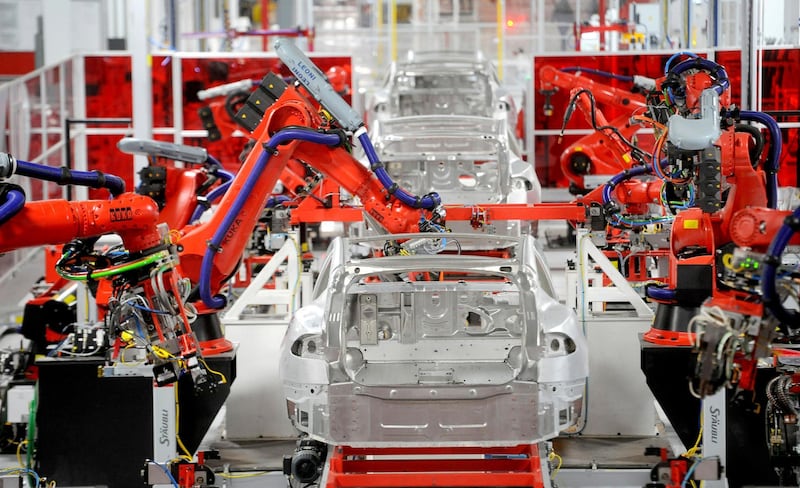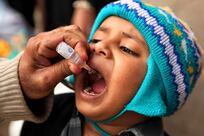“No words can express how much I care about your safety and wellbeing," wrote Elon Musk in an email last year to his employees at Tesla, his electric automotive company.
"It breaks my heart when someone is injured building cars and trying their best to make Tesla successful. Going forward, I’ve asked that every injury be reported directly to me, without exception.”
He was prompted to send the email because over the past four years, Tesla has faced several claims that the rate of workplace injury in its factories was higher than the industry average.
Safety and wellness should be at the top of the list of every executive and head of human resources when it comes to talent attraction, care and retention.
Tesla is far from being the only company that struggles with workplace injuries, an issue which is both global and cross-sector. The automotive sector is not even among the most dangerous of industries. Construction, agriculture (which represents 50 per cent for the global labour force) and mining top the list when it comes to the combination of work-related deaths, injuries and illnesses.
In his typical action-orientated style, Mr Musk therefore decided to address the issue and get involved personally to improve the safety of his employees. Yet despite notable efforts to improve workplace safety at Tesla, a recent incident in its Fremont factory triggered more scrutiny and led to a fine by the California Division of Occupational Safety and Health – a fine that the company is appealing.
The day the news broke, the value of the company dropped 2 per cent on the market. Although somewhat unfair, given that every company faces potential workplace accidents, Tesla’s woes at least raise the question of occupational safety and health, an issue constituting a massive global health and economic burden.
In September last year, during the XXI World Congress on Safety and Health at Work held in Singapore, the International Labour Organisation and the European Agency for Safety and Health at Work revealed that the estimated cost of injuries and illnesses in the workplace tops $3 trillion annually. In the European Union, accidents and injuries in the workplace alone cost more than $567 billion each year.
Given the scale of the problem, it is no surprise to see safety in the workplace mentioned in three of the United Nations' 17 Sustainable Development Goals (SDGs). Goal eight leaves no doubt about what needs to be achieved about a problem that exists in every country, irrespective of its level of industrialisation.
Physical and mental fatigue account for a lot of accidents and injuries that happen at work.
____________________
Read more from Olivier Oullier:
[ It might be too late to help Avicii but technology can help treat depression ]
[ Could your morning cup of joe be considered a performance-enhancer? ]
[ We can all do our bit to stop antibiotic overuse ]
____________________
According to the American College of Occupational and Environmental Medicine, fatigue is defined as “the body’s response to sleep deprivation or lengthy physical or mental hard work”. Working for long hours, work overload, sleep deprivation, stressful tasks and relationships, workplace design, mental wellbeing and medical conditions account for the main occupational fatigue risk factors.
Until recently, the best way to monitor fatigue of employees was to ask them to fill in questionnaires, undergo medical screenings and use CCTV to assess whether someone looks tired and whether safety measures are being respected at work, although it could not detect the cause of fatigue.
However, thanks to the advent of portable eye-tracking and neurotechnologies allowing onsite and real-time assessment of attention, distraction, stress or cognitive fatigue, I have been able to study the cognitive and brain dynamics of many workers around the world over the past 10 years.
Pilots, airline controllers, traders, factory workers, drivers, construction workers, energy plant operators, teachers or people working in front of their computer all day, you name it: every time I could assess how tired, stressed, efficient or distracted they were in the workplace, their employers benefited from the learnings of neuroinformatics.
As a result, workdays and distribution of labour was adapted to each individual and employees ended up happier, less stressed and more efficient. Work safety and mental wellbeing are among the top asks of organisations when they reach out to my company.
Although very few organisations in Europe and the US would publicly admit using neurotechnologies and neuroformatics, things are quite different in China, as illustrated by recent news that the government is supporting various initiatives in the public and private sectors to collect brain data and therefore improve safety at work as well as productivity.
An official leading state grid Zhejiang Electric Power's brain monitoring programme recently declared to the South China Morning Post that since it started using neurotechnologies in 2014, the company improved its productivity and made an extra $315 million.
According to a recent report from the International Social Security Association, for every dollar invested in occupational safety and health, there is a return of $2.62. Investing in workplace safety pays off.
No doubt there will be more companies around the world that will be inspired by what is going on China. I think they are right but in the race for productivity and safety supported by personalised neuroinformatics, they must put ethics, data security, privacy and consent of employees as the highest priority.
Professor Olivier Oullier is the president of Emotiv, a neuroscientist and a DJ. He served as global head of strategy in health and healthcare and member of the executive committee of the World Economic Forum






